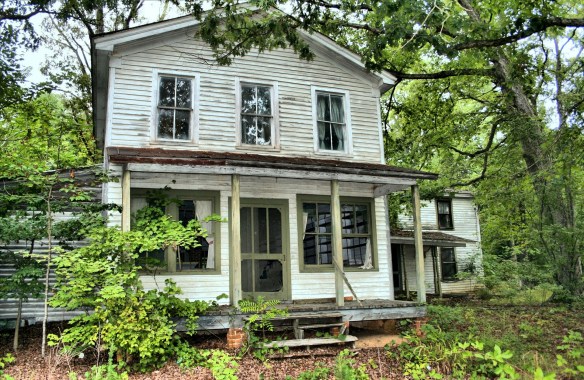REFinBlog has been nominated for the second year in a row for The Expert Institute’s Best Legal Blog Competition in the Education Category. Please vote here if you like what you read.
Realtor.com quoted me in Yikes! What If Your Home Inspector Missed Something Huge? It opens,
Your offer has been accepted, and there’s just one more obstacle between you and your new home: the inspection. It can be a stressful event for both buyers and sellers as they wait for the report, hoping no major issues will surface that could sideline the deal.
But what if you make it through that day, let out a big sigh of relief, seal the deal, and then a few weeks or months later find an issue in your new home—a bat infestation, a leaky roof, a CDC-level mold problem—that the home inspector didn’t catch? Just how much peace of mind does a home inspection really buy you?
Find out how you can protect yourself.
Sadly, there’s no insurance home buyers can take out to protect themselves from a faulty inspection. As such, the most important step home buyers can take to prevent that scenario is to select a reputable inspection company.
Make sure you choose a firm that has been in the residential inspection business for a while and has a strong reputation (real estate agents and lenders often have recommendations).
But most important, your home inspector should have adequate insurance.
Keith Balsiger, president of Balsiger Insurance in Las Vegas, says buyers should ask for a current certificate of insurance that shows the inspection company has both general liability insurance and professional liability insurance (also known as errors and omissions insurance). This is what would potentially cover you as a buyer if there was a major “miss” on the part of the inspection.
If you want to be extra safe, you can call the insurance agency of the inspection company to confirm the coverage on the certificate is still valid.
You also want to closely examine the terms of the liability insurance. David Reiss, professor of law at Brooklyn Law School, says some contracts will state that the company is liable only for the cost of the inspection, which won’t be much solace if you find yourself on the hook for repairs that could cost hundreds of thousands of dollars.
“Ideally, you would not want there to be any limit on the inspector’s liability in case he or she was negligent in doing the inspection,” says Reiss. At the very least, make sure the limit exceeds the cost of the inspection alone.
Why buyers should attend the home inspection
As an added safeguard, buyers should be physically present during the inspection. If an inspector balks at this idea, that’s a red flag. Make sure to find out what is covered by the inspection, and if there’s anything you want the inspector to scrutinize in particular (say, you know the boiler is old or the basement has water stains, suggesting flooding issues), state that upfront.
“It’s a buyer’s job to make the most of the home inspection,” says Bryant Dunivan Jr., a real estate and consumer protection attorney in Brandon, FL. Here are some things to watch for during the inspection:
- The inspector is working off a checklist of items that was in the contract.
- Major systems (air conditioning, heating, water, etc.) are tested.
- The inspector actually enters attic and crawl spaces.
- A report complete with pictures is provided.
What to look out for in a home inspection
Robert Pellegrini Jr., president of PK Boston, a real estate law firm based in Boston, says a typical red flag disclaimer on the inspection report is a statement that there was a problem with “access” to roofs, eaves, and areas behind locked or blocked doors or crawl spaces.
“That serves to absolve the inspector of any liability,” Pellegrini says.
Urge the home seller to remove all barriers that might prevent an inspector from doing a thorough job. Some home buyers even take the process into their own hands and hire drones or robots to view inaccessible areas.
Uh-oh! You’ve closed, but there’s a problem
No matter how many precautions you take, the nightmare scenario does happen: You move in and then discover a problem. A big one. Can you bring it up with the seller? After all, sellers are required to disclose any known issues about the home.
Well, here’s the rub: Proving the seller knew about something after the fact is nearly impossible, and the legal cost involved in trying to prove it is often too steep to make an attempt.
Which brings us back to the home inspector. If you encounter a problem, bring it up with your inspector. As long as you used one with decent liability insurance that covers more than just the cost of the inspection, odds are decent you’ll be compensated for any damages. Again, you’ll have to prove it. For example, if the inspector said the roof was in good condition, but there was a leak months later during a big storm, you would have to prove that nothing happened in the intervening time that damaged the roof.
“Bottom line: You would probably need pretty clear facts on your side to win,” Reiss says.







